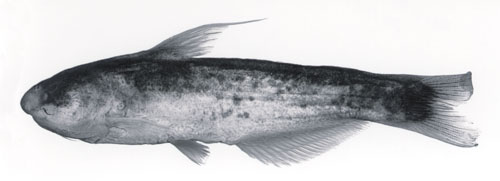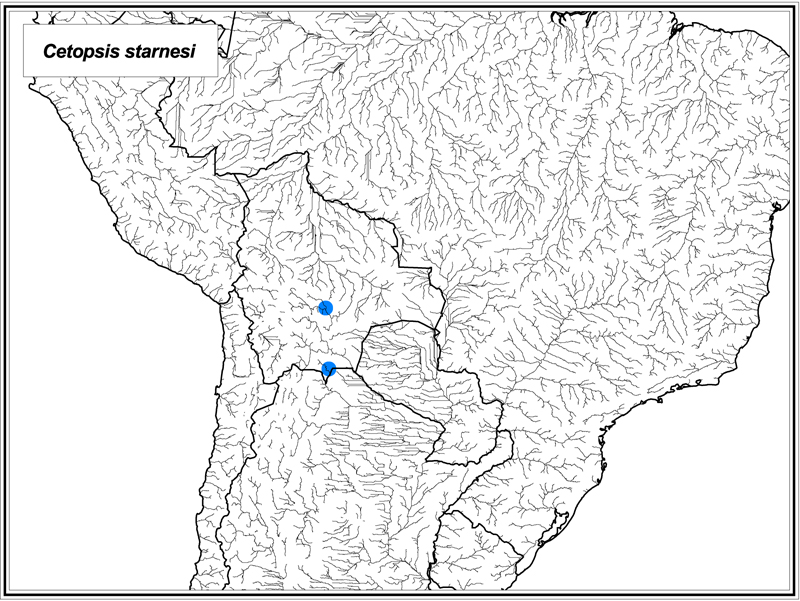
Reproduced from Vari, Ferraris and de Pinna (2005).
Cetopsis starnesi Vari, Ferraris & de Pinna, 2005
Identification: Cetopsis starnesi can be distinguished from all of its congeners by the combination of the presence of an eye, the conical teeth on the vomer and the dentary, the rounded posterior nares which is distinctly separated from the contralateral nares by a distance greater than the width of the posterior nares, the absence of a dark humeral spot, the presence of a posteriorly-rounded, variably-developed, bilobed patch of dark pigmentation at the base of the caudal fin, the absence of a spot of dark pigmentation on the base of the dorsal fin, the absence of prominent dark pigmentation along the membrane behind the first ray of the dorsal fin, the presence of approximately eye-size, dark spots on the lateral surface of the body, the absence of finely-scattered, dark pigmentation across the lateral and anterior surfaces of the snout, and the possession of 22 or 23 branched anal-fin rays. It is further distinguished from the externally very similar C. umbrosa in the number of precaudal vertebrae (11 or 12 versus 14, respectively), caudal vertebrae (33 versus 30, respectively), and total anal-fin rays (27 or 28 versus 26, respectively). Maximum size: 97 mm SL.
Range: Cetopsis starnesi is only known from two localities in southeastern Bolivia, the holotype locality (USNM 314308) in the far northwestern portions of the R�o de La Plata basin and the site where the female paratype (CBF 887) was captured in the far southern reaches of the upper Rio Madeira basin.
Information from Vari, R. P., C. J. Ferraris Jr. & M. C. C. de Pinna. 2005. The Neotropical whale catfishes (Siluriformes: Cetopsidae: Cetopsinae), a revisionary study. Neotropical Ichthyology 3:127-238.
